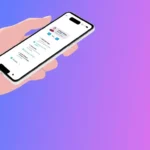“This will be the year when telehealth will explode,” people think.
And yet, it doesn’t quite seem to hit the proverbial tipping point.
I like the phrase “tipping point” because it captures the imagination, sounds simple, and has celebrity attached to it by way of Malcolm Gladwell’s bestseller The Tipping Point.
A tipping point implies that there is one moment you can pinpoint when a critical change has taken place.
Of course, a tipping point is often the result of multiple factors.
Today, we’ll talk about the multiple factors driving the increasing adoption of telehealth, whether they will amount to a telehealth tipping point, and what you should do about them.
What is driving the telehealth adoption tipping point?
In her blog, Sande Olson recently laid out 5 key trends that can push telehealth towards a tipping point…
Telemedicine reimbursement – An increasing number of states in the US are adopting legislation to expand usage and reimbursement of telemedicine
Allowing clinical practice across state lines – The VA has already introduced policies to allow providers to cross state boundaries to provide healthcare services via telemedicine without having to get licenses in individual states. Legislators are pushing similar policies outside the VA.
Interoperability – Telehealth will advance as EHR vendors start to interoperate and Health Information Exchanges start to gain traction. These interoperability initiatives facilitate greater coordination of care by enabling providers to access relevant information about the patient no matter where the patient is.
Physicians under duress – Physicians in private practices face mounting pressures to join ACOs, adopt EHRs, adhere to regulations, and handle new reimbursement codes. They are also retiring and getting “out” of the business at a higher rate because of all the pressure. In the meanwhile, other physicians are increasingly looking at telehealth as a way of building practice efficiency, reaching more patients, nurturing relationships with patients and colleagues, and coordinating care.
Writing “on the wall” – Positive news about telehealth adoption and results continues to build. Not only are there more peer-reviewed articles, there is more attention in the popular press.
Of course, a multitude of other factors are also applying pressure on the healthcare system, and creating opportunities for innovative telehealth solutions to alleviate those pressures:
- the aging baby boomer population,
- the increasing shortage of physicians,
- the increasing scrutiny on the quality of care, and
- the high adoption of mobile technologies for healthcare, among others.
All of these trends point to an undeniable fact … there are increasingly more reasons to adopt telehealth as a solution for a variety of healthcare crises and shifts.
So while we can’t pinpoint the precise factor, change, or trend that will cause telehealth adoption to explode, the writing really is on the wall.
In his pivotal book, The Structure of Scientific Revolution, philosopher Thomas Kuhn points out that a paradigm changes when more and more facts accumulate that don’t fit the current picture of the norm.
The tipping point is coming!
But wait, there’s more … than one telehealth tipping point
Traditionally, we talk about the tipping point in relation to the adoption of a product, service, or idea.
But there are actually three tipping points for telehealth – one for awareness, one for adoption, and one for utilization.
What’s more is that these are not all sequential.
They’re all occurring in parallel.
Naturally, people need to become aware of telehealth in order to adopt it or use it.
But it’s also true that the more people adopt telehealth, the more other people become aware of it.
And the more people use telehealth products and services, the more awareness it receives.
So in a sense, these shifts are all feeding off each other.
This means 2 things in terms of what you do.
You can accelerate your own telehealth solution’s tipping point by advancing its awareness, adoption, or utilization. Don’t focus only on growing the footprint.
Don’t wait for widespread awareness of telehealth to occur before expecting widespread adoption. Otherwise, you could be too late to get in the game when the high adoption curve hits.
Can you spot a telehealth tipping point?
It’s virtually impossible to pinpoint a tipping point.
Can you pinpoint the moments that any of your friends actually became your friends?
If it’s hard enough to pinpoint turning points in your personal life, how can you expect to spot the point where numerous trends suddenly drive telehealth into a different level of recognition or adoption or utilization?
You can’t.
But you can look for signs that it is on its way.
Here are the signs I would look for …
The tipping point for awareness of telehealth
On the awareness front, I would expect 20% of healthcare administrators, physicians, and other clinicians to be able to
- cite at least 1 example of a telehealth solution being used
- identify at least 2 ways that telehealth could be used (e.g. what kinds of technology used for what clinical purposes), AND
- list 3 or more potential benefits of telehealth
I choose 20% because the number is not insignificant.
A Rensselaer Polytechnic Institute study indicated that 10% of a population’s unshakeable belief in something would be enough for that to be adopted by the majority of society.
For greater confidence, I’m doubling that.
I also included the metrics of identifying uses and benefits because real awareness should imply some understanding of the implications.
The tipping point for adoption of telehealth
The core measure of telehealth adoption must be with the people who will actually use telehealth.
Everyone else may apply pressure, but if the people responsible for execution aren’t adopting it, it’s not going anywhere.
I envision a tipping point if 20% of healthcare provider organizations have telehealth as part of their core strategy.
Again, I choose 20% because it’s well beyond just a few early adopters, but there is still room to grow into the high adoption curve.
For these provider organizations, telehealth would be seen as a way of
- Being more advanced than their competition
- Attracting more patients
- Attracting physicians
- Attracting other healthcare organizations into their provider networks
Such organizations would also have resources dedicated to telehealth endeavors, possibly even entire telehealth departments.
You’ll see them competing with their telehealth solutions the way they used to compete to have the latest 128-slice CT scanner, and then the 256-slice CT scanner.
The tipping point for utilization of telehealth
Finally, on the utilization tipping point, there simply cannot be a universally applicable measure.
That’s because utilization can vary significantly depending on the clinical applications, the population being served, and the availability of alternatives.
Instead, I would look at the following proxies as signs that telehealth has passed the utilization tipping point:
- When people stop labeling telehealth as “telehealth” because it has become so mainstream that it doesn’t require a label. It will have gotten absorbed into clinical workflows, almost as much as making phone calls.
- When business models that tie their revenues to utilization are self-sustaining.
- When users in a satisfaction survey indicate that they are likely or very likely to use the telehealth service again.
Final thoughts
Returning to Sande Olson, she asks whether telehealth will reach its tipping point in 2013.
There is earnest debate about whether this will occur in 2013 or a short time in the future.
Some say it has already occurred, if you measure by the millions of patients that have already been diagnosed/treated via telehealth.
By my metrics, I think all three tipping points have yet to arrive and will be 3-5 years out.
But that should not mean you can ignore them for now.
If you are interested enough to read this article, you are part of the paradigm shift not just through your awareness of telehealth, but also your ability to bring about awareness, adoption, or usage.
Even if the changes you seek are not occurring around you, recognize too that tipping points and paradigm shifts occur in pockets before they become widespread.
Just because telehealth is not taking off right around you, it is taking off elsewhere.
There are sectors of the healthcare marketplace where telehealth is getting high awareness, adoption and utilization.
Look around for models you can replicate.
As Mahatma Gandhi said “Be the change you wish to see in the world.”
The reality is that you can affect change.
You my friend can help the world accelerate towards those tipping points.
That is the ultimate truth.
What do you think of these tipping points and how to spot them? Please share your comments below.

-250x220.jpg)





